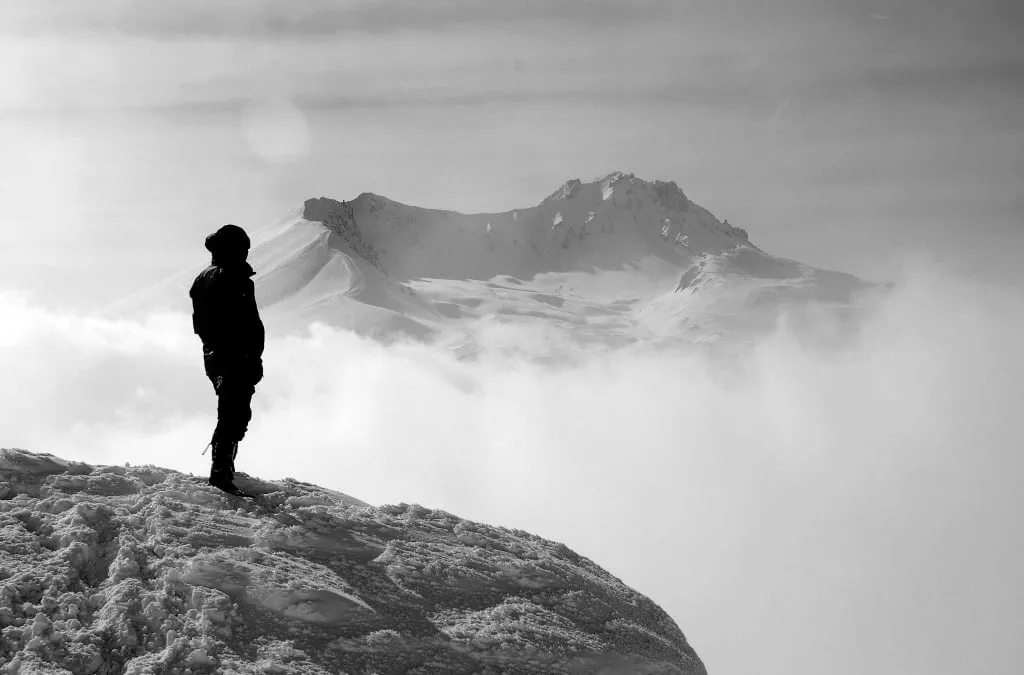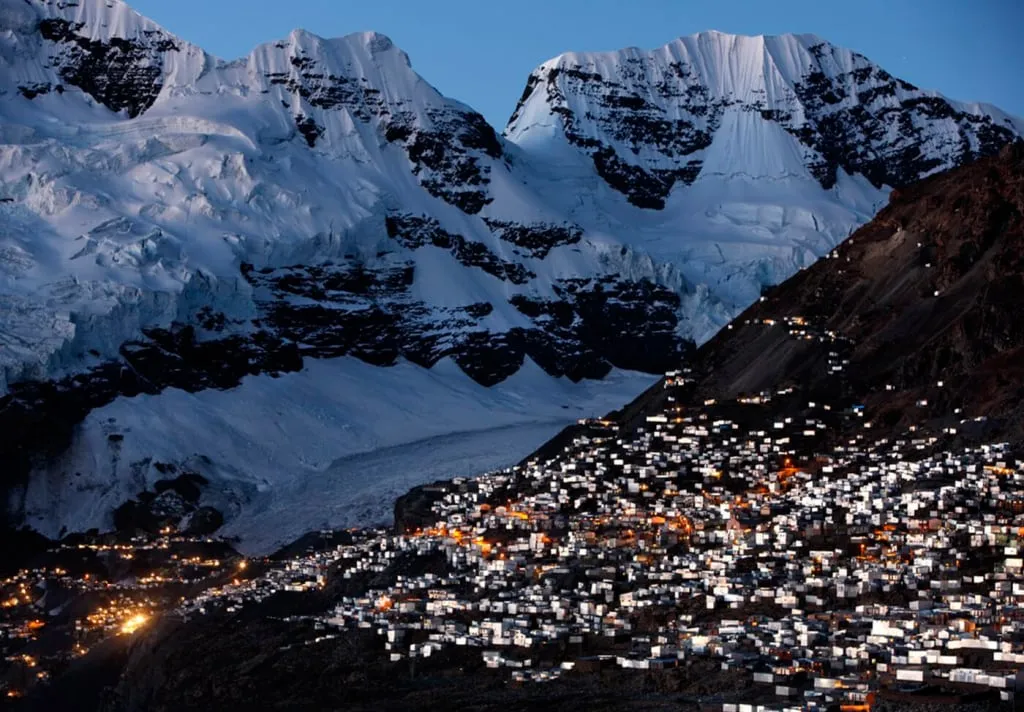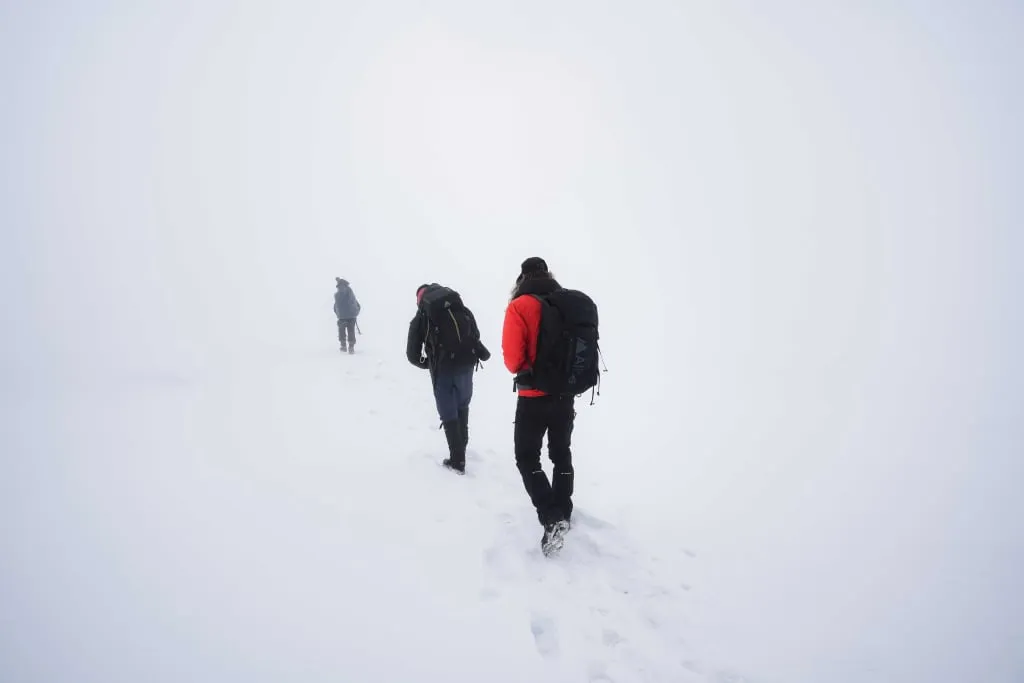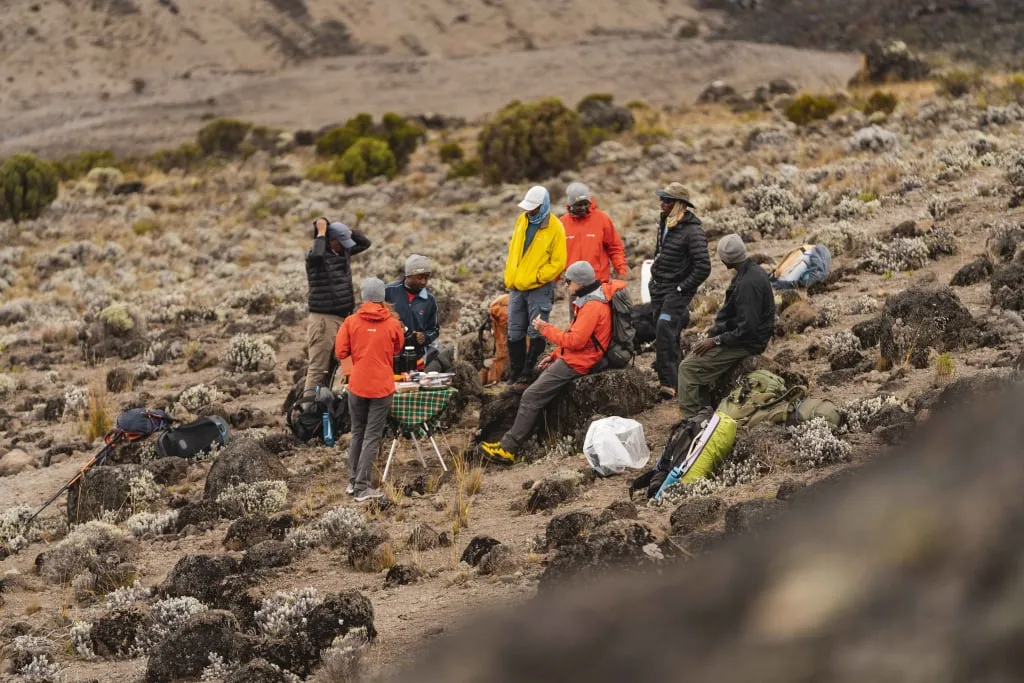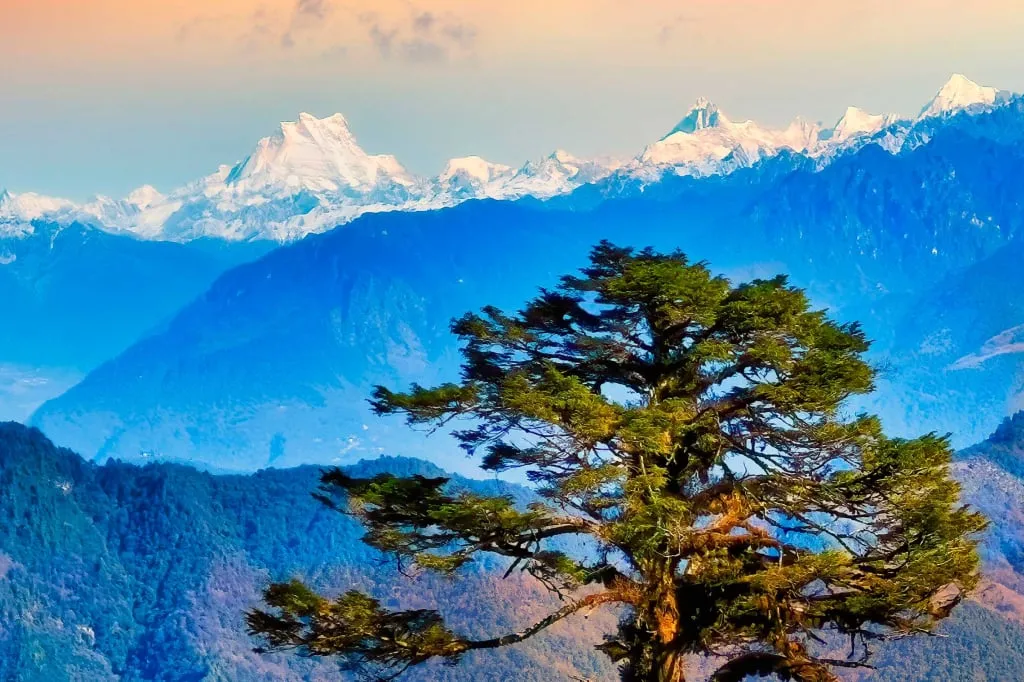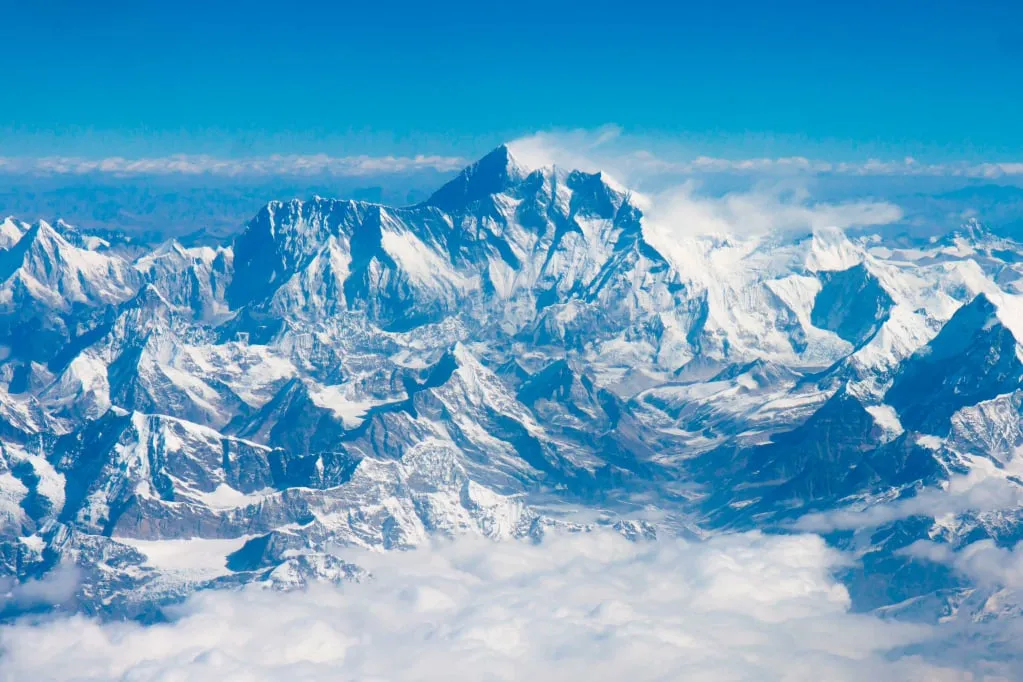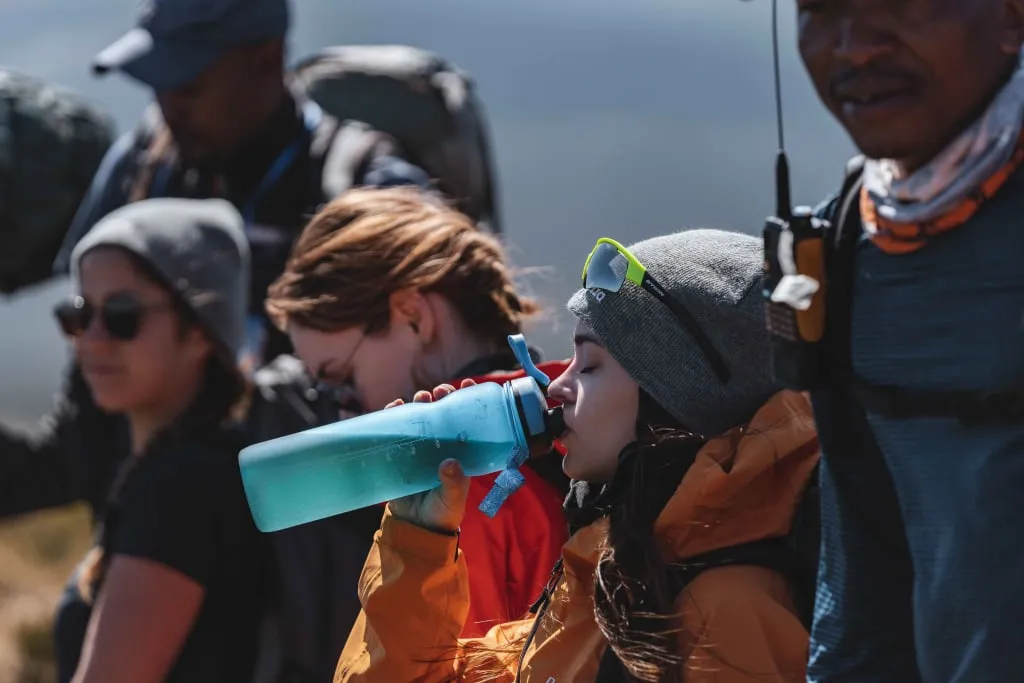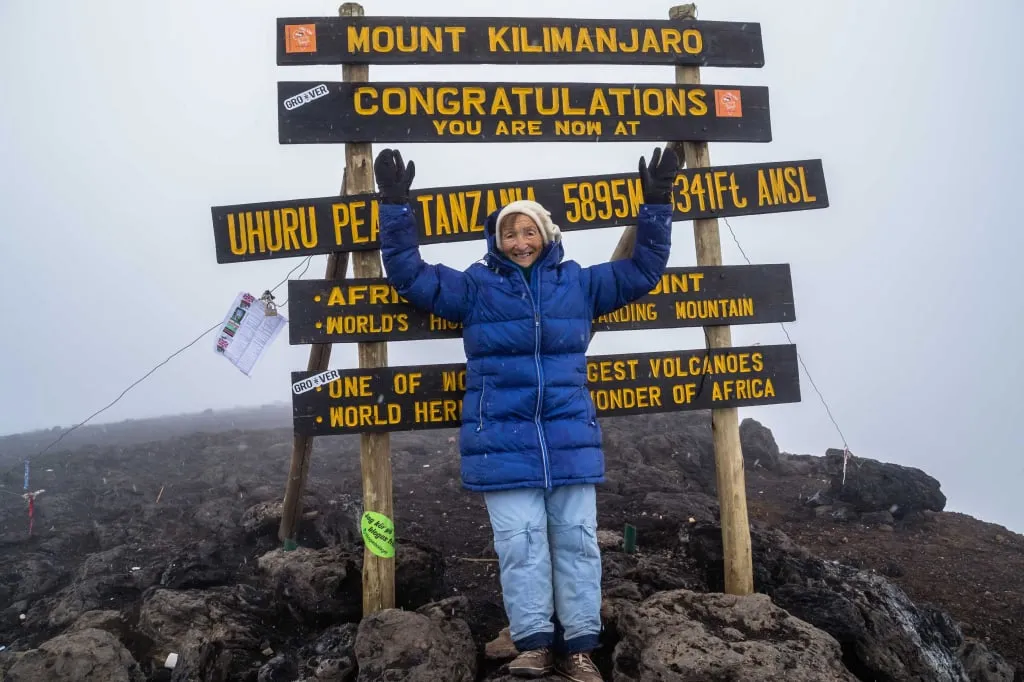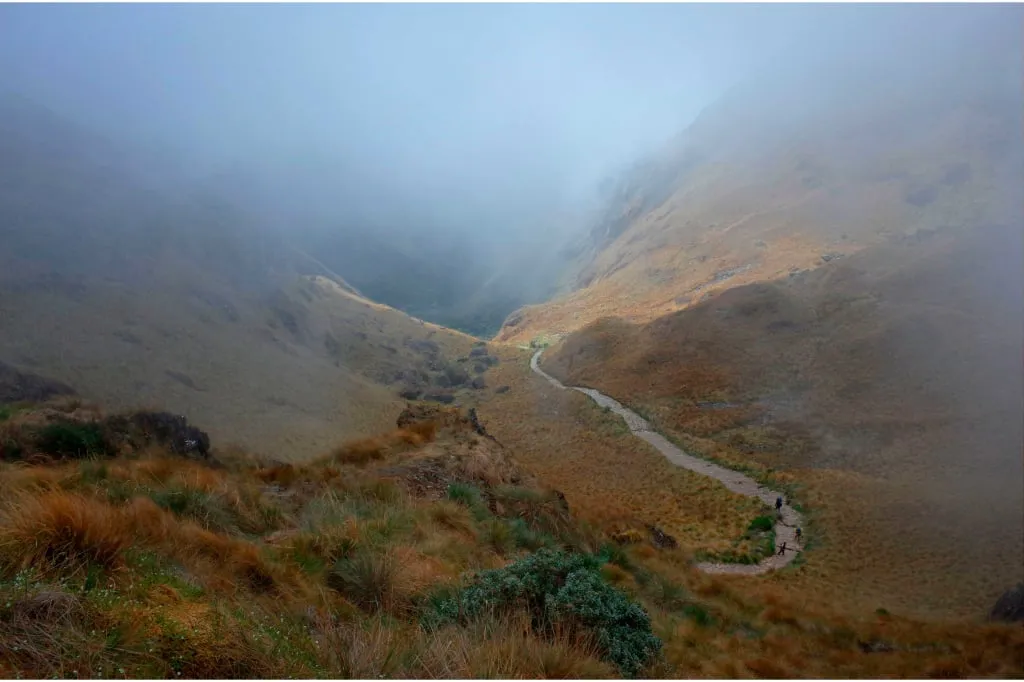Venturing into the realm of high-altitude hiking requires more than just a love for the mountains. It demands careful planning, physical preparedness, and an understanding of the unique challenges that await on the mountain slopes. In this all-encompassing guide, we'll take you through the essentials of high-altitude hiking, including basic theory, potential challenges, acclimatization strategies, training tips, gear recommendations, and expert advice to ensure a successful and rewarding expedition.
A human in the mountains
In August 1980, amidst a white lifeless snow-desert, engulfed in a cloud of fog, a lone man stood at an incredible height. The altimeter displayed the number 8200, indicating the number of meters above sea level—a height where no organism can survive. Even spending a short time at this altitude is hazardous to one's health and life. However, the man stood there, swaying and contemplating how he and his imaginary companion would fit inside the tiny tent he had just set up.
There was no real companion, but the man, wrapped in warm clothing, worried that his partner would not have enough food. So, he cut the piece of meat in half to ensure fairness. As he turned around, the solitary mountaineer realized that he was utterly alone in this cold, snowy world. His climbing partner, with whom he had been sharing everything he had for the past few hours, existed only in his exhausted brain, deprived of oxygen, rest, and warmth
That climber was the legendary and the snow-covered mountain he was ascending was the awe-inspiring and deadly Everest. Messner became the first person to summit alone, without the use of supplemental oxygen. During the climb, he slipped into a crevasse, struggling to free himself and almost ready to give up and turn back. The timing for the ascent was unconventional - it was during the monsoon season and unfavorable weather. Just before the final push, conditions worsened, with fog rolling in and light snowfall. Experiencing oxygen deprivation at such high altitude and challenging weather conditions, Messner's brain started to malfunction.
Later, the mountaineer admitted that solo climbing Mount Everest without supplemental oxygen was the most challenging thing he had ever done. When he descended to the camp, his girlfriend, Nena Olgin, wrote in her diary, “It seems that a drunk came down from the col and not the same man who left four days ago”. Messner was physically and mentally exhausted. Upon his return, the medics in the camp asked him why he went up there to die. His response, which became legendary, was: "I went up there to live." This story is a good example of what can happen to a person at high altitudes.
Altitude and well-being
So, what happens to people who climb so high, where the body struggles with unfamiliar conditions? Our ancestors evolved at altitudes close to the level of water in the oceans. Migration to non-standard habitats occurred relatively recently, and the history of mountaineering is less than two centuries old.
Of course, there are exceptions when a group of people settles in high places and lives there under reasonable conditions. The most famous examples are La Rinconada, a town in Peru at an altitude of 5,100 meters (16,732 feet), Tuiwa, a Tibetan village in China at an elevation of 5,070 meters (16,633 feet), the high-altitude town of Santa Barbara in Bolivia at 4,774 meters (15,659 feet), and Karzok, an Indian village located at an elevation of at least 4,570 meters (14,993 feet) above sea level. From the perspective of mountain medicine, all of them are situated in a zone of very high altitude, which certainly affects the health of the inhabitants.
What drives people to settle so high? La Rinconada is a mining town with a population of several thousand people working in harsh conditions to extract gold. The residents of La Rinconada suffer from a constant lack of oxygen and endure cold air where even trees do not grow. Tuiwa is home to fewer than 200 people leading a very simple way of life. We do not know enough about this village, but Tibet's history is associated with spiritual practices, which could have served as a reason for the seclusion of the early settlers. Santa Barbara in Bolivia, like La Rinconada, emerged thanks to mines, essentially being a small mining settlement. The Indian village of Karzok is located next to a Buddhist temple.
It seems that only religion and gold can drive people to live where they will be uncomfortable. All these high-altitude settlements are exceptional. However, the majority of people live in cities much closer to sea level. If you look at the ,world’s megacities you will see that their elevation is often measured in tens of meters. It is under such conditions that the human body has evolved.
But sometimes people leave their familiar cities and venture to great heights. Something else drives them up beside the desire for material gain and spiritual needs. It may be the passion for adventure. The mountains call out to humans, and many respond to that call. Approaching the preparation for a mountain expedition correctly and ensuring proper actions are taken during the climb itself will significantly enhance safety and minimize health risks.
Health hazards at high altitude
What exactly does an unprepared individual experience at high altitude? There can be various effects of being at higher elevations, although it doesn't necessarily mean that everyone will experience all of them. However, it's better to be aware of these effects in advance. Let's discuss all the observable manifestations of altitude acclimatization, from mild symptoms to the most severe and rare ones when the body struggles to adapt.
Altitude affects different individuals in different ways. Some people may experience mild discomfort but hardly notice any discomfort, while others may suffer but manage to reach their intended goal. For some, it becomes uncomfortable even above an altitude of 1500 meters or roughly 5000 feet.
Mild Acute Mountain Sickness
Here's what people can experience at high altitudes:
- Headaches
- Weakness
- Shortness of breath during walking or other exertion
- Loss of appetite
- Nausea or vomiting
- Dizziness
- Rapid heartbea
- Tingling sensation on the skin
- Swelling of the hands, feet, and face
- Increased urination or flatulence
- Insomnia
- Disrupted breathing during sleep
- Nosebleeds
- General malaise
Other symptoms may also occur, especially in individuals with chronic illnesses or for example in pregnant women or children. None of the listed symptoms are “mandatory” during high-altitude hiking. However, the appearance of some of them is likely within 12-24 hours after the start of the ascent.
If any of these symptoms manifest but do not hinder further ascent, it can be considered a good sign indicating the body's adaptation process. Conversely, the absence of more frequent urges to urinate, for example, may indicate poor acclimatization and dehydration.
The combination of several symptoms is indicative of altitude sickness. Together, they may indicate the mildest form of such condition - acute mountain sickness (AMS). The body responds to it with an adaptive reaction. With successful acclimatization, the symptoms become milder or disappear entirely within a few hours or days. In most cases, it takes 1-2 days for this to happen.
Severe altitude sickness: pulmonary and cerebral edema
There are also severe forms of altitude sickness where fluid begins to accumulate in the internal organs, leading to high-altitude pulmonary edema (HAPE) or high-altitude cerebral edema (HACE). In the worst cases, both processes occur simultaneously. It is important to pay close attention to the symptoms of edema in order to take timely measures and halt the progression of the illness. In this case, every hour matters as it can develop rapidly.
Symptoms of High-Altitude Pulmonary Edema (HAPE):
- Shortness of breath even at rest
- Feeling of tightness in the chest
- Inability to lie down, immediate desire to sit up (frequent awakenings)
- Coughing (may be accompanied by moist or bloody phlegm)
- Weakness
The diagnosis of high-altitude pulmonary edema is made when any two of these symptoms are present. Additional signs include rapid breathing and heartbeat, wheezing during breathing, and bluish discoloration of the skin.
Risk factors for the development of pulmonary edema include previous respiratory and cardiovascular diseases, as well as chronic and acute infections such as pneumonia, tonsillitis, and bronchitis. Pulmonary edema can also be triggered by excessive physical exertion before the body has fully acclimatized to the altitude. Therefore, it is recommended to ascend slowly with frequent rest breaks.
Treatment for HAPE includes oxygen therapy, rest, warming the body, and, in cases of ongoing disease progression, immediate descent. The recommended medication treatment may involve taking nifedipine, which, by the way, is available in every Altezza Travel first-aid kit.
Symptoms of High-Altitude Cerebral Edema (HACE):
- Fatigue and lethargy
- Disorientation, altered mental state, difficulty thinking and expressing thoughts
- Nausea
- Rapid heartbeat
- Ataxia, which is a motor disorder characterized by impaired coordination of movement (resembling drunkenness)
- Fever
- Photophobia, a painful sensitivity to light
Cerebral edema is the most severe and life-threatening form of altitude sickness. In most cases, if you have heard of mountaineer deaths on Everest that were not caused by accidents, it was likely due to high-altitude cerebral edema. This occurred when climbers ignored the illness and continued their ascent. The disease often progresses rapidly, and within 24 hours of the onset of serious symptoms, coma ensues, followed by death.
Treatment for HACE includes oxygen therapy, immediate descent if stabilization does not occur, and evacuation in the event of worsening conditions where the individual is unable to move independently. Dexamethasone can be used as medication. It is also available in Altezza Travel first-aid kits.
High-altitude regions
At what altitudes do certain effects occur? In mountain medicine, we categorize altitude into three regions with distinct characteristics, primarily based on pressure, which affects the oxygen content in the air.
The three regions are as follows:
- 1,500-3,500 meters (4,920-11,480 feet) - high altitude
- 3,500-5,500 meters (11,480-18,040 feet) - very high altitude;
- above 5,500 meters (18,040 feet) - extreme altitude.
Let's also mention the mark of 8,000 meters (26,240 feet) above sea level. Anything above this is known as the death zone. At such altitudes, well-being significantly and rapidly deteriorates. Prolonged stays are not possible as the body's systems simply shut down under the strain, leading to death. The maximum time spent at such altitudes is two to three days, and that is for experienced climbers who use supplemental oxygen. Acclimatization above 8,000 meters (26,240 feet) is not possible. There are 14 mountain peaks on Earth surpassing this altitude.
As we mentioned earlier, living at sea level is the easiest for humans. At an elevation of 0 meters above sea level, the average atmospheric pressure on Earth is approximately This is equivalent to about 760 millimeters of mercury (mmHg). Here individuals with heightened meteorological sensitivity sometimes track pressure readings in weather forecasts. This is especially important for those with low or high blood pressure, respiratory issues, or circulatory problems. External pressure influences the condition of blood vessels, thus affecting oxygen supply to the body and ultimately overall well-being.
Air pressure does not have a direct correlation with altitude; it is also influenced by weather conditions, particularly temperature and humidity. In humid maritime climates, altitude sickness can occur at lower elevations compared to regions with dry climates. For example, in Kamchatka and Patagonia, symptoms of altitude sickness can be felt at elevations below 1,500 meters (4,920 feet), whereas in the arid Himalayas, the effects of high altitude are only noticeable from 3,500 meters (11,480 feet) or even higher. This means that relying solely on the elevation above sea level is insufficient.
Breathing at high altitudes
To understand how our respiratory system functions, we need to comprehend not only atmospheric pressure but also partial pressure. It is a measure of the pressure exerted by a specific gas component of the air as if it occupied the same volume as all the gases together. The air contains nitrogen, oxygen, argon, carbon dioxide, and other gases. Of significance to us is oxygen, which comprises However, while its proportion remains constant at any altitude, the partial pressure of oxygen decreases as we ascend to higher altitudes due to the decrease in atmospheric pressure.
As a person ascends higher above sea level, the atmospheric pressure decreases. The force of gravity weakens, allowing gases to disperse more freely in the air. Consequently, the partial pressure of oxygen also decreases. At sea level, the partial pressure of oxygen in the atmosphere is approximately 21.2 kPa. The atmospheric pressure decreases by about half every 5,500 meters (18,044 feet), and along with it, the partial pressure of oxygen decreases. In other words, you inhale the same volume of air as before, but it contains less oxygen.
Let's take a look at Mount Everest, the tallest mountain on Earth, to understand how this occurs. At the base of Everest, the partial pressure of oxygen is close to the familiar norm of 21 kPa, making it easy to breathe. In the Everest base camps, located at an altitude of 5,150-5,364 meters (16,896-17,598 feet), the atmospheric pressure decreases by approximately half. For simplicity, let's consider it as 50 kPa, which is half of the 100 kPa at sea level. The amount of oxygen in the air remains the same, about one-fifth or 20.946%, resulting in the partial pressure of oxygen being reduced by about half to just over 10 kPa. However, the exponential decrease becomes more noticeable as you go higher.
At the summit of Mount Everest, at 8,848 meters (29,029 feet), the atmospheric pressure is only 33.7 kPa, and the proportion of oxygen remains about one-fifth. Calculating 21% of 33.7 kPa, we find that the partial pressure of oxygen at this altitude is only 7.1 kPa. This is one-third of the familiar norm of 21 kPa. In other words, to obtain the accustomed amount of oxygen, you need to inhale three times more air.
Meanwhile, in our blood, the partial pressure of carbon dioxide decreases. Here, we come across another important effect of high altitude. How does the process of respiration work? We have receptors in large blood vessels and in the brain that constantly measure the partial pressure of carbon dioxide and oxygen in the blood. This information reaches the respiratory center, which analyzes the readings and determines the frequency and depth of our breaths. Our arterial partial pressure norms are established at sea level: 5.3 kPa for carbon dioxide and 13 kPa for oxygen. When the readings deviate from these norms, our brain makes us breathe more frequently and take deeper breaths
Up to approximately 2,500 meters (8,202 feet) above sea level, the priority for the brain is the arterial partial pressure of carbon dioxide, and above that, the pressure of oxygen in the blood becomes more important. This particular altitude of 2,500 meters is considered critical for the onset of altitude sickness. Most healthy individuals experience its initial symptoms at this altitude, and acclimatization begins.
Periodic breathing during sleep
After surpassing the 3,000-meter (9,842-foot) mark, some people may experience sleep-disordered breathing. This effect is known as periodic breathing or Cheyne-Stokes respiration. It manifests as a sequence of periods: initially, shallow and infrequent breaths, then frequent and deep breaths, followed by a complete pause in breathing for several seconds, after which the cycle repeats
During the pause, a person may wake up with a feeling of suffocation. At high altitudes, such restless sleep can be exhausting and prevent climbers from getting proper rest. The shift in breathing patterns is caused by the respiratory center's response to the arterial partial pressure of the two gases in the blood: carbon dioxide and oxygen. For those who are experiencing high altitudes for the first time, this is considered a normal reaction.
Dehydration
Low atmospheric pressure accelerates moisture evaporation, leading to dehydration. This effect should be constantly kept in mind when ascending to higher altitudes. Another factor directly contributing to dehydration can be more frequent urination.
Sometimes, a person may not notice dehydration and don’t feel thirsty. However, the lack of water in the body will eventually affect its functioning. It is crucial to drink water constantly, even when you don't feel like it. The optimal recommendation is 3-4 liters (8-10 cups) per day.
Ultraviolet radiation
Ultraviolet radiation is a danger that should not be forgotten, especially with excessive sunlight at high altitudes. The higher you climb, the more vulnerable you become to ultraviolet radiation. In snowy areas, such as Mount Everest, its impact is even stronger because the light reflects off the snow. The risk of sunburn increases.
Protecting yourself from ultraviolet rays can be achieved through clothing, sunscreen for the face and hands, as well as sunglasses. It is also worth remembering the use of a buff, which can be pulled up from the neck to the face, providing protection from both sun rays and cold.
Cold
Cold temperature is another crucial factor to consider when heading to the mountains. It is always cool in the mountains, and the higher you climb, the colder it gets. Uncomfortable temperatures can be accompanied by strong winds and high humidity. Here, another parameter comes into play, the perceived air temperature, which can be significantly lower than the numbers you see in weather forecasts before going to the mountains.
If you happen to encounter rain in such conditions, the situation will worsen. Cold weather is a very important factor to keep in mind during preparation and planning for the ascent. It is essential to have an additional set of warm clothing, as well as spare pairs of socks and gloves in case the main ones get wet. The risk of frostbite increases at extreme altitudes.
A reliable expedition company not only informs participants about all the necessary equipment but also provides them. For example, on Kilimanjaro, Altezza Travel has the largest warehouse of mountaineering gear where each climber can rent everything from clothing to sleeping bags.
 Get PDF
Get PDF
How to prepare yourself for high altitudes?
So, how can you prepare your body for being at high altitudes? The short answer is: you can't. Altitude sickness can affect anyone regardless of their health condition, age, gender, and so on. There are no specific exercises that can prevent acute mountain sickness or its individual symptoms. Athletes who regularly train at their usual altitude are just as susceptible to the illness as people who have never engaged in sports. In our decade-long experience of organizing Kilimanjaro climbing tours, we have often seen how fit male athletes struggled while unprepared young women effortlessly and comfortably climbed the mountain.
There is no direct correlation between the risk of altitude sickness and chronic illnesses such as diabetes or lung diseases. However, those with deviations from normal respiratory and cardiovascular functions should be particularly attentive to their well-being during the ascent. There is no correlation between the risk of illness and the age of climbers, although it is sometimes claimed that young people are more prone to altitude sickness than the elderly. However, this claim often refers specifically to young men aged 16-25.
Some coaches suggest endurance exercises like running or swimming, but they are not directly related to the conditions experienced at high altitudes. Physical fitness does play a positive role as it helps cope with the demands of movement, ascent, and carrying loads. A person who is not overweight and in good athletic shape expends less energy compared to someone leading a sedentary lifestyle when facing increasing physical exertion during a mountain expedition. An individual who is weakened or has an excess of body fat compared to muscle mass will face both physical exertion and adaptation to high altitudes. However, it's uncertain whether they will have enough capacity for both. Cardiovascular exercises will undoubtedly help prepare the body for mountain climbing, but no exercises can fully prepare for the challenges of gaining altitude.
The only thing that can be theoretically done at familiar altitudes is to undergo training in a hypobaric chamber that simulates low atmospheric pressure. However, this is a medical procedure that is complex and requires the presence of medical professionals. It is not accessible to most people as these chambers are used to train astronauts, pilots, and parachutists. There are also altitude tents available where the pressure remains normal but the oxygen concentration decreases from the usual 21% to 12%, simulating low partial pressure of oxygen at high altitudes. Such tents are used during nights for one week before the ascent.
A good strategy is an acclimatization through expeditions to lower altitudes before attempting high mountains. For example, before climbing Mount Kilimanjaro, one can engage in high-altitude trekking on Mount Meru, which helps the body adapt to physical exertion and provides necessary acclimatization preparation. The higher the mountain you plan to climb, the more important it is to carefully plan a gradual acclimatization at lower altitudes, allowing your body to adjust smoothly. This is particularly crucial before conquering the highest peaks of the Karakoram and Himalayas.
Why did we provide detailed information about the specific effects experienced at high altitudes? Simply put, to explain their complex biochemical nature that manifests at extreme heights where humans have never lived. There are no specific training programs in urban conditions for this purpose, and it is impossible for most people to prepare their bodies for extreme altitudes without venturing into the mountains and gradually increasing the altitudes of their overnight stays.
There is only one exception—people's origin and the altitude at which they live. If you are from Tibet, the Andes, the Ethiopian Highlands or other high-altitude regions and have constantly lived at high altitudes, there is a chance that your genetic heritage will give you an advantage at high elevations. Tibetan inhabitants have been observed to have a larger lung capacity and the ability to breathe more frequently than other people on the planet. Andean residents have blood volumes capable of carrying more hemoglobin than those of other individuals. High-altitude inhabitants of Ethiopia have a generally elevated hemoglobin level compared to those living in lowland areas. All of this indicates the genetic adaptation of populations residing in mountainous regions for thousands of years. People who live at altitudes exceeding 2,500 meters above sea level constitute just over 1% of the global population.
What should everyone else do, those whom nature did not predispose in advance? The answer is simple: follow the rules that will help your body adapt during the ascent.
Tips for better acclimatization:
How you feel during your ascent depends on how quickly you gain altitude, how much time you spend at various elevations, the intensity of your movements, and whether you engage in physical exertion. It's also important to follow the "climb high, sleep low" rule and ensure you stay adequately hydrated.
In most cases, the success of acclimatization depends on the quality of your climbing program, the expertise of your guide, and the overall organization of the expedition, including tents, equipment, and food.
Acclimatization also has a psychological component. It is known that individuals under emotional stress have a harder time acclimatizing compared to those who are relaxed and mentally prepared. We recommend disconnecting from everyday worries and dedicating your thoughts to the journey and the expedition. Minimizing psychological stress positively impacts the speed of acclimatization, while stress slows it down.
Before the ascent
The best way to prevent altitude sickness is to allow your body to acclimatize naturally. This involves a gradual gain in altitude, not only in terms of walking speed but also in terms of the selected camps where you spend the nights. The main part of acclimatization occurs during sleep, but the activities you do during the day are also crucial.
One of the first things you can do is to take acetazolamide (better known as Diamox) before starting the climb. Diamox is a medication that helps the body cope with acclimatization. It is used for therapy in cases of brain and lung edema and as a preventive measure before ascending to higher altitudes. You can read more about this drug in our article. If you're embarking on a Kilimanjaro expedition with Altezza Travel, you can always find this medication in the expedition first aid kit and at the beginning or during the climb.
If you have significant respiratory or cardiovascular issues, it is essential to consult a doctor before planning your ascent.
The choice of the climbing program determines not only the level of difficulty but also your well-being during the process. It's recommended to opt for longer programs with more days. For example, seven-day Kilimanjaro routes are recommended over shorter six and five-day variations. The more days you give your body for adaptation, the higher the likelihood of reaching the desired altitude and feeling better. This is exactly the reason why we choose longer itineraries for our group Kilimanjaro trips.
Also, pay attention to the inclusion of acclimatization hikes in mountain trekking program. These are walks or climbs in your free time after reaching each camp. The purpose of these hikes is to help your lungs adjust to the altitude you'll face in the coming days. You ascend at a leisurely pace, enjoying the highest elevation you reach that day before descending to the camp for the night. While you sleep, your circulatory system works to produce more red blood cells, responsible for delivering oxygen from the lungs to all tissues of the body. The next day, you will feel better. This is the core principle of mountaineering: "climb high, sleep low." It is particularly effective on popular mountain routes like the Inca Trail in Peru and the ascent of Mount Kilimanjaro in Tanzania.
In addition to increased red blood cell production, the body responds to higher altitudes with other physiological changes in the respiratory and circulatory systems. That's why multi-day climbing programs are better than short ones.
Carefully examine the information about the mountain operator with whom you plan to embark on your ascent. A reputable company will provide detailed information about their climbing programs: the route, the camping equipment and gear, the meal plan, the professionalism and training of the guides, the medical support provided during expeditions, the consideration of health risks for participants, insurance coverage, and an evacuation plan in case of emergencies to ensure the safety of their clients
For example, at Altezza Travel, we provide comprehensive information on how to prepare for climbing Kilimanjaro.
Key recommendations for the ascent:
During the expedition, follow a few simple rules that will protect you from severe symptoms of altitude sickness and make the ascent more comfortable:
- Move as slowly as possible during the expedition
- Drink more water than usual (3-4 liters per day).
- Do not skip meals, even if you lose your appetite.
- Avoid excessive physical exertion, especially in the first 48 hours. It is advisable to refrain from sports activities throughout the entire ascent.
- Avoid alcohol, sleeping pills, and tobacco before and during the climb.
- Monitor your well-being, and if you experience multiple symptoms of altitude sickness, inform your guide.
- In case altitude sickness worsens, descend. Often, descending by just 500 meters is sufficient for symptoms to disappear.
- Use supplemental oxygen at extreme altitudes if symptoms worsen. The decision will be made by the leading guide of the group.
To learn more about climbing with Altezza Travel, read our special article on acclimatization on Kilimanjaro. We provide information on how our guides work, daily mandatory medical check-ups, and the actions taken by our rescue guides in the event of acute altitude sickness. There you will also find more detailed information about the stages of acute mountain sickness, high-altitude pulmonary edema, and cerebral edema.
If you're ready to test your strength by climbing a mountain, we invite you to Mount Kilimanjaro, the highest peak in Africa. It's a wonderful place for those who haven't yet conquered high mountains but are eager to try. You don't need to be an athlete or have special equipment to climb Africa's highest peak. With Altezza Travel, you can feel completely confident about your well-being during high-altitude hiking.












